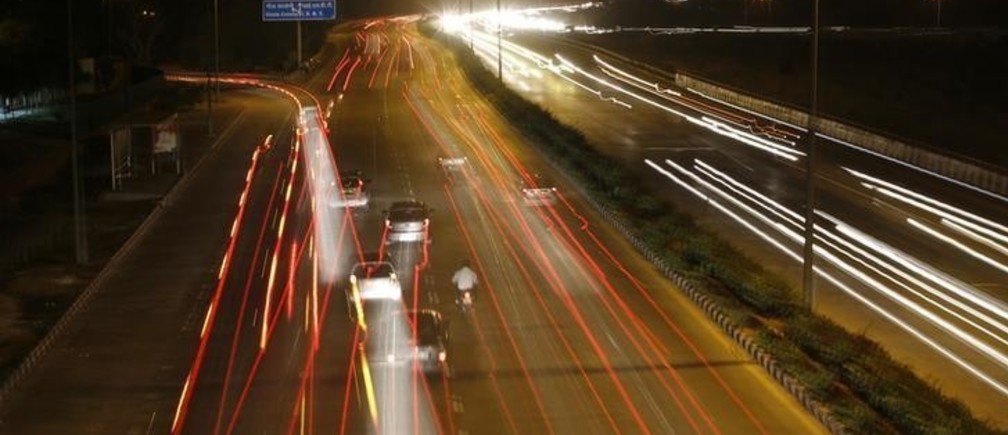India is planning to build 83,000 km of roads

India's economy has been suffering so, to increase public sector spending, 40,000km of roads will be built Image: REUTERS/Adnan Abidi

Get involved with our crowdsourced digital platform to deliver impact at scale
Stay up to date:
Infrastructure
After almost three-and-a-half years in power, the Narendra Modi government is making an audacious bet on infrastructure to try and kickstart India’s sputtering economy.
In the next five years, the government plans to build 83,677 kilometres (km) of roads by spending a staggering Rs7 lakh crore ($108 billion). This is the largest-ever outlay for road construction in India and the length of the proposed roads is more than twice the Earth’s circumference (around 40,000km). In all, India has about 96,260km of national highways, while the total length of all roads is about 3.3 million km.
The plan includes the Bharatmala Pariyojana, involving an extensive highway network of 34,800km connecting India’s western border to the eastern one, with a likely investment of Rs5,35,000 crore. Another Rs157,000 crore will go towards building 48,877km of roads by the state-run National Highway Authority of India (NHAI) and the ministry of road transport and highways.
“The huge spending on infrastructure announced today will give a fillip to private sector investment,” finance minister Arun Jaitley said in a press conference on Oct. 24.
India, the world’s fastest-growing economy until earlier this year, hit an air pocket after the Narendra Modi government decided to demonetise two of the country’s high-value currency notes last November and introduced a new tax regime in July. Private investment and consumption have shrunk while industrial production has remained low. The agriculture sector, too, has been in the doldrums. So it’s now up to the government to increase public sector spending to turn around the economy.
India’s road sector began recovering only recently from years of stagnation. Between 2012 and 2014, the government could only award 5,000km of road projects. Prime minister Modi, on the other hand, promised to build 41km a day after he came to power. However, his government has been constructing only 25km a days so far, totalling around 8,200km in the last financial year. Given that performance, building 16,700km of roads every year for the next five years to meet the 83,677km target won’t be easy for the government.
This slow expansion is also due to a lack of private sector funding, even as the government has tried out various financing models. This includes the engineering, procurement, and construction (EPC) model where road-building is done by private developers and funded by the government. It has also devised the new hybrid annuity model wherein the government would share project costs with the private sector in a 40:60 ratio.
“The road sector has one of the highest economic and employment multiples in the country. In that sense, this is possibly the best stimulus that we can get,” Vinayak Chatterjee, chairman at Gurugram-based infrastructure services company, Feedback Infra said. “With most of these projects likely to be undertaken by EPC and hybrid annuity, and the involvement of numerous agencies such as the national highways authority and state road agencies, it is possible to achieve the target of 83,000km in the next five years.”
Don't miss any update on this topic
Create a free account and access your personalized content collection with our latest publications and analyses.
License and Republishing
World Economic Forum articles may be republished in accordance with the Creative Commons Attribution-NonCommercial-NoDerivatives 4.0 International Public License, and in accordance with our Terms of Use.
The views expressed in this article are those of the author alone and not the World Economic Forum.
Related topics:
The Agenda Weekly
A weekly update of the most important issues driving the global agenda
You can unsubscribe at any time using the link in our emails. For more details, review our privacy policy.
More on Geographies in DepthSee all
Naoko Tochibayashi and Naoko Kutty
April 25, 2024
Andrea Willige
April 23, 2024
Libby George
April 19, 2024
Apurv Chhavi
April 18, 2024
Efrem Garlando
April 16, 2024
Babajide Oluwase
April 15, 2024






